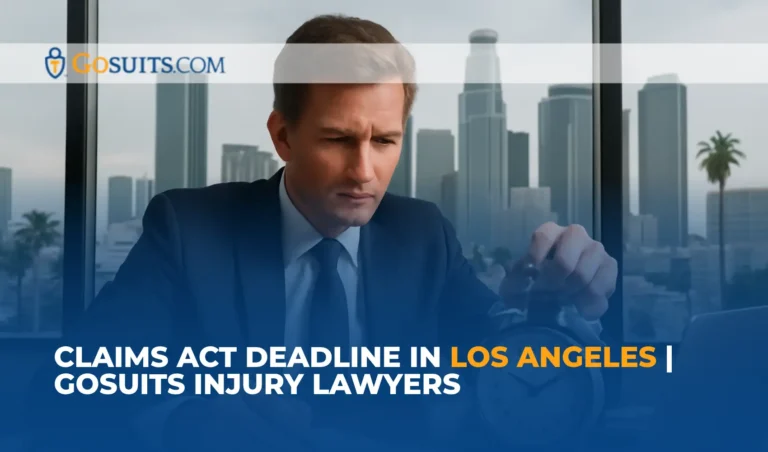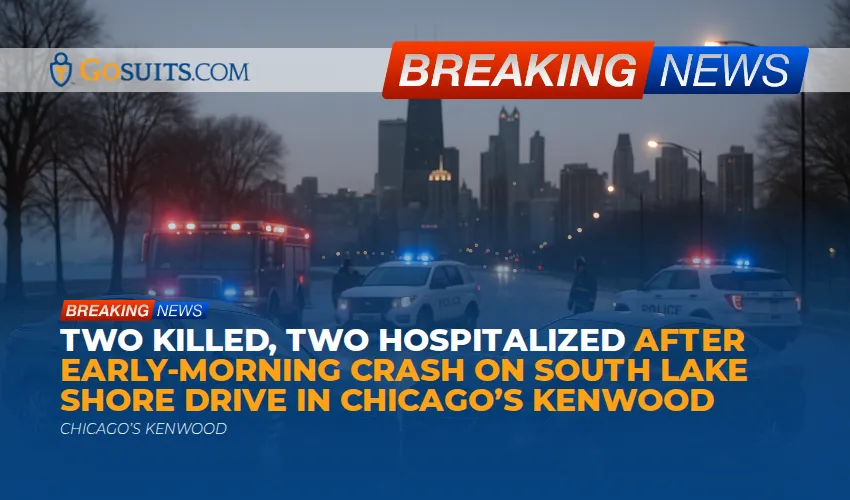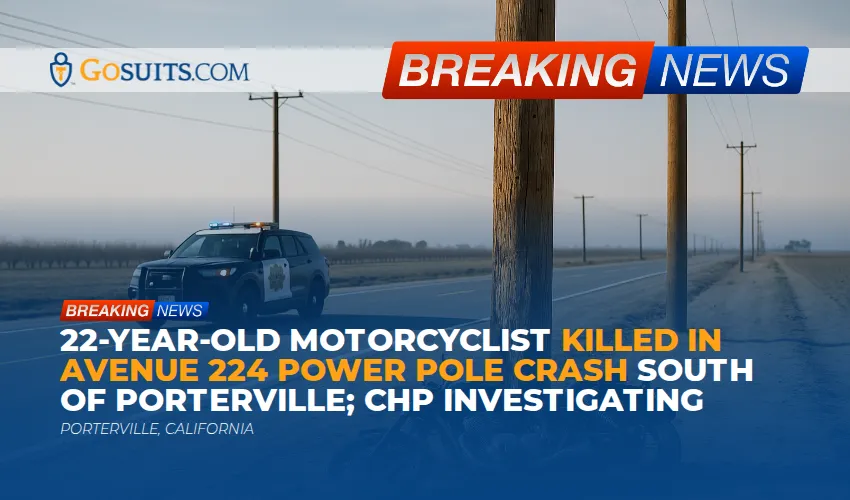- What is the California Government Claims Act and why does it matter in Los Angeles?
- What is the California Government Claims Act deadline in Los Angeles?
- When does the six-month clock start under Government Code section 911.2?
- How do you file a public entity claim in Los Angeles within six months?
- What if you miss the six-month claim deadline in Los Angeles?
- After a claim is rejected, what is the deadline to file the lawsuit?
- How does the Government Claims Act interact with statutes of limitations?
- What claims are common against Los Angeles public entities?
- What defenses and immunities do Los Angeles public entities raise?
- How can you strengthen a timely claim within six months?
- How can public entities and insurers in Los Angeles evaluate claims?
- Do wrongful death claims against Los Angeles public entities follow the six-month deadline?
- How do dangerous sidewalk or street claims work in Los Angeles?
- How do public transportation accident claims work with LA Metro and other agencies?
- How are school district injury claims handled in Los Angeles County?
- What are real-world timing examples for Los Angeles government claims?
- Where do you get Los Angeles claim forms and how do you serve them near me?
- Why is legal help important for Los Angeles Government Claims Act cases?
- How can GoSuits Injury Lawyers help with Los Angeles Government Claims Act deadlines?
- Where can you read the law and official guidance?
What is the California Government Claims Act and why does it matter in Los Angeles?
The California Government Claims Act is a set of state laws that require you to present a written claim to a public entity before you can file a civil lawsuit for money damages. In Los Angeles, this covers claims against the City of Los Angeles, Los Angeles County, school districts, public universities, transportation agencies like LA Metro, and other local public entities in Southern California. The Act is found in California Government Code sections 810 through 996.6. A claim presentation is a mandatory pre-lawsuit step for most personal injury and wrongful death claims against public entities. If you skip it or miss the deadline, your lawsuit can be dismissed, even if your case would otherwise be strong.
Public entities exist to serve large populations. Los Angeles County alone has over 9.7 million residents, making it the most populous county in the country, which means many interactions with public property, public employees, streets, sidewalks, schools, and transit systems. With that scale, the Government Claims Act is a gatekeeping process that gives the entity a chance to investigate and potentially resolve claims early, and it sets strict timelines that both sides must follow. See California Government Code sections 905, 910, 911.2, 912.4, 913, 945.4, and 945.6 for the core timing and content rules. The concept that government must consent to be sued traces back to sovereign immunity; modern statutes like California’s Act provide that consent with conditions.
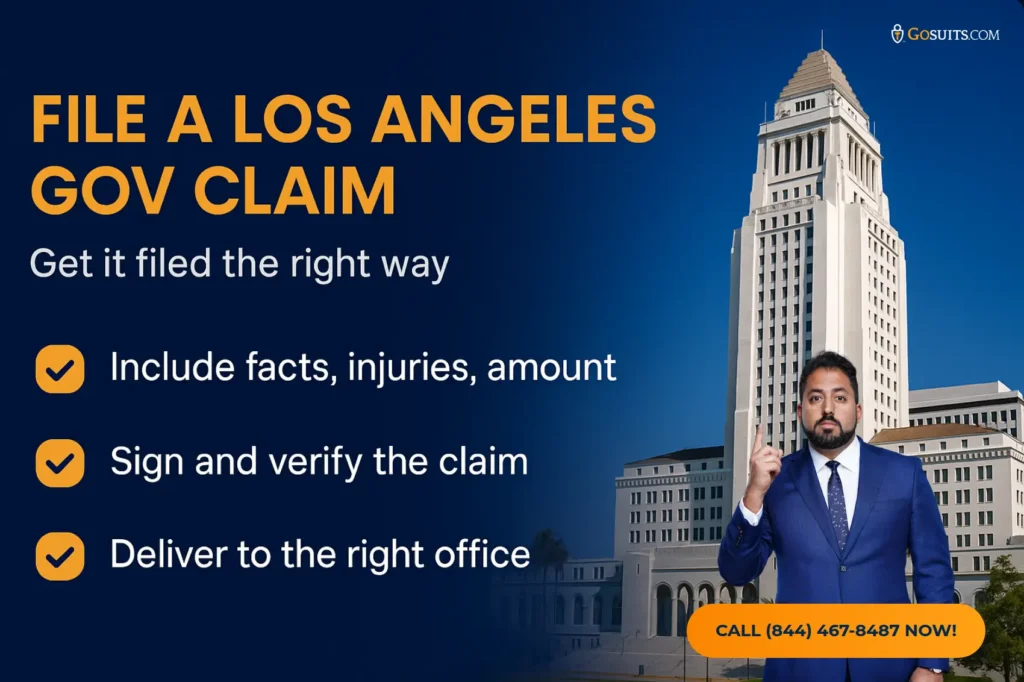
What is the California Government Claims Act deadline in Los Angeles?
For most injury cases against a public entity in Los Angeles, you must present a written claim within six months of accrual. California Government Code section 911.2(a) states that claims relating to a cause of action for death or for injury to person or to personal property must be presented not later than six months after the accrual of the cause of action. For other types of claims, such as many contract or property damage claims not covered by the six-month rule, the deadline is one year from accrual.
- Six-month claims: personal injury, wrongful death, damage to personal property, or damage to growing crops. Examples: a city sidewalk trip-and-fall in Downtown Los Angeles, an LA Metro bus collision in East LA, a police negligence claim in South LA, a dangerous condition of public property in Hollywood, a school district injury in Pasadena.
- One-year claims: other causes of action not included above, which can include certain contract or property-related claims.
These deadlines apply to public entities within Los Angeles County, including the City of Los Angeles, Los Angeles County, Santa Monica, Pasadena, Glendale, Burbank, Beverly Hills, West LA jurisdictions, San Fernando Valley cities, Inglewood, Long Beach, and others. The safest approach is to treat your claim as subject to the six-month rule unless clearly outside that category, because misclassification can be fatal to a case.
When does the six-month clock start under Government Code section 911.2?
Under Government Code section 901, a claim accrues at the same time a cause of action would accrue under the statute of limitations rules, subject to some special accrual provisions. In general, that means accrual occurs when you are injured and know, or reasonably should know, the facts giving rise to the injury and the public entity’s potential responsibility. California recognizes the delayed discovery rule in appropriate cases, but courts apply it with care. Examples:
- Sidewalk fall in Westlake on January 1: Your claim accrues on January 1 when you fell and were injured. The six-month deadline to present the claim runs to about July 1, subject to exact calendar computation under Government Code section 11 and section 911.
- Bus collision in Boyle Heights on March 15: Accrual occurs on March 15. You must present your claim by roughly September 15. If the entity provides a proper written rejection later, the lawsuit deadline will be addressed below.
- Wrongful death in South LA on April 5: Accrual occurs on the date of death for Government Claims Act timing. The heirs or personal representative must present the claim within six months of April 5.
- Hidden defect discovered later: If the injury cause was unknown and could not reasonably have been discovered at first, delayed discovery may apply. Accrual is fact-specific and should be analyzed carefully, as a miscalculated start date can time-bar the claim.
How do you file a public entity claim in Los Angeles within six months?
California Government Code sections 910 and 910.2 detail what a claim must include, and section 915 describes where and how to present it. In Los Angeles, each public entity typically provides its own claim form and instructions, but you are not required to use a particular form as long as your claim meets statutory requirements. Here is what to include and how to serve it:
What information must your claim include under Government Code section 910?
- Claimant information: Your name and post office address.
- Address for notices: Where the entity should send correspondence.
- Date, place, and circumstances: When and where the incident occurred, and the facts that support liability.
- Description of injury or loss: The nature and extent of injuries or property damage.
- Public employees involved: Names of known employees causing the injury, if known.
- Damages amount: The specific amount claimed if under $10,000, or an indication it exceeds $10,000 with a description of the injuries and damages. For claims over $10,000, state whether the claim is a “limited civil case” or exceeds that threshold.
Government Code section 910.2 generally requires the claim to be signed and, in many cases, verified. Entities may return defective claims and provide an opportunity to correct under sections 910.8 and 911.
Where do you deliver the claim in Los Angeles under Government Code section 915?
- Proper recipient: Present the claim to the clerk, secretary, auditor, or to the entity’s statutorily designated agent for service. Delivery to a different department can be legally ineffective.
- Method: Hand delivery or mailing is permitted. Keep proof of mailing or delivery. Use certified mail with return receipt whenever possible.
- Strict compliance: Courts require strict compliance with section 915’s delivery rules. Presenting a claim to the wrong office can result in dismissal later, even if someone inside the entity actually received it.
How do you identify the correct Los Angeles entity and form?
- City of Los Angeles: Search the City’s official site for “Claim for Damages” to find the current form and mailing address for the City Clerk or designated agent.
- Los Angeles County: Look for the County’s official “Claim for Damages” page and follow its instructions for filing with the County’s designated office.
- LA Metro, LAUSD, and other districts: Each has its own claim process. Use the official agency website and confirm the correct recipient and mailing address listed by that entity.
- State of California agencies operating in LA: Claims against state agencies often must be presented through the state’s Government Claims Program. Check the California Department of General Services for current instructions.
In all cases, verify the current address and any filing fee or portal requirement on the entity’s official website before sending. Do not rely on third-party sites or outdated addresses. If you have any doubt about entity identity in Greater Los Angeles or whether more than one entity is involved, investigate now, not later.
What if you miss the six-month claim deadline in Los Angeles?
California provides a narrow safety valve for late claims, but it is time-limited and discretionary. Government Code section 911.4 allows you to apply to the public entity for leave to present a late claim. Important points:
- Outer limit of one year from accrual: You must submit a late claim application within a reasonable time not to exceed one year after accrual. If more than one year has passed, the entity and the court generally lack power to grant relief.
- Grounds for relief: Acceptable reasons include mistake, inadvertence, surprise, or excusable neglect, and the entity was not prejudiced by the delay. Relief may also be available if the claimant was a minor during the six-month period, was physically or mentally incapacitated, or died. See Government Code sections 911.4 and 911.6.
- Supporting evidence: Provide a declaration explaining the delay, attach evidence of incapacity or other facts, and show diligence after discovering the deadline problem.
- Entity’s decision timeline: The entity must act on a late claim application within the statutory timeframe. If denied, the entity will send written notice.
- Court petition if denied: If your late claim application is denied, you may petition the superior court for relief from the claim presentation requirement under Government Code section 946.6. This petition must be filed within six months after the entity mails the denial notice. The court will consider whether your failure was excusable and whether the entity is prejudiced.
Late-claim relief is not automatic. The best practice is to present the claim within the original six-month period. If you suspect a deadline problem in Los Angeles or anywhere in Southern California, act immediately to preserve your rights.
After a claim is rejected, what is the deadline to file the lawsuit?
There are two common lawsuit deadlines under Government Code section 945.6:
- Six months from written rejection: If the public entity serves a written notice of rejection that substantially complies with Government Code section 913, and it includes the statutory warning, you must file your lawsuit no later than six months after the date the denial notice was personally delivered or deposited in the mail.
- Two years from accrual if no proper written rejection: If the entity does not provide written notice of action in compliance with section 913, you have two years from accrual to file the lawsuit. This can also apply if the written notice is deficient and does not include the required warning.
Additional timing rules to know:
- Deemed rejection after 45 days: If the entity does not act on your claim within 45 days after it is presented, it is deemed rejected by operation of law under section 912.4. The deemed rejection preserves your right to sue, but the six-month lawsuit deadline under section 945.6 is triggered only by a written notice that complies with section 913.
- Calendar with care: Compute deadlines precisely. If you receive a written rejection on November 1, your six-month mark is around May 1. If there is no written rejection, track the two-year from accrual deadline.
How does the Government Claims Act interact with statutes of limitations?
Think of the Government Claims Act as a pre-lawsuit requirement that sits on top of the normal statute of limitations. Government Code section 945.4 bars filing suit unless and until you timely presented a claim and it was rejected or deemed rejected. The six-month claim deadline under section 911.2 and the post-rejection lawsuit deadline under section 945.6 operate in addition to the substantive statute of limitations. Failure to present the claim on time can bar the case even if the statute of limitations has not expired. Conversely, even if you presented a claim on time, you still must file the lawsuit within the section 945.6 window once rejection occurs.
What claims are common against Los Angeles public entities?
Across Los Angeles, CA, frequent claim types include:
- City sidewalk trip-and-fall claims in Downtown Los Angeles, Hollywood, West LA, and East LA alleging dangerous conditions of public property such as uplifted panels or broken surfaces.
- Public transportation accident claims involving LA Metro buses or trains in Pasadena, Glendale, Burbank, San Fernando Valley, or Long Beach.
- School district injury claims in LAUSD or other districts involving campus hazards, supervision incidents, or athletic injuries.
- Police negligence claims alleging vehicle collisions or other negligence in Los Angeles County municipalities.
- Roadway and intersection design or maintenance claims alleging a dangerous condition of public property under Government Code section 835.
Each scenario has unique proof and timing issues, but nearly all require a six-month claim under section 911.2 if they involve personal injury or death.
What defenses and immunities do Los Angeles public entities raise?
California Government Code section 815 establishes that public entities are not liable for common law torts unless a statute declares liability. Plaintiffs often proceed under section 835, which provides liability for injuries caused by a dangerous condition of public property when the entity created the condition or had notice and failed to remedy it, and the condition created a reasonably foreseeable risk of injury.
Common statutory defenses include:
- Design immunity under Government Code section 830.6 when a plan or design was approved by a discretionary body or employee with authority and there is substantial evidence supporting reasonableness.
- Discretionary act immunity under section 820.2 shielding employees for discretionary policy decisions, with related entity immunity under section 815.2(b).
- Failure to provide police protection immunity under section 845 in certain claims.
- Limits on prosecution-related immunity under section 821.6, which has been interpreted by the California Supreme Court to not bar all negligence claims involving police; application depends on the nature of the conduct.
- Trivial defect arguments under section 830.2, asserting the condition was not dangerous as a matter of law because the risk was minor in the circumstances.
- Strict compliance with claim presentation, including arguments that the claim was late, defective, or delivered to the wrong office under section 915.
Entities may also argue lack of actual or constructive notice of the condition, absence of causation, or comparative fault. Plaintiffs should anticipate these issues and assemble evidence early.
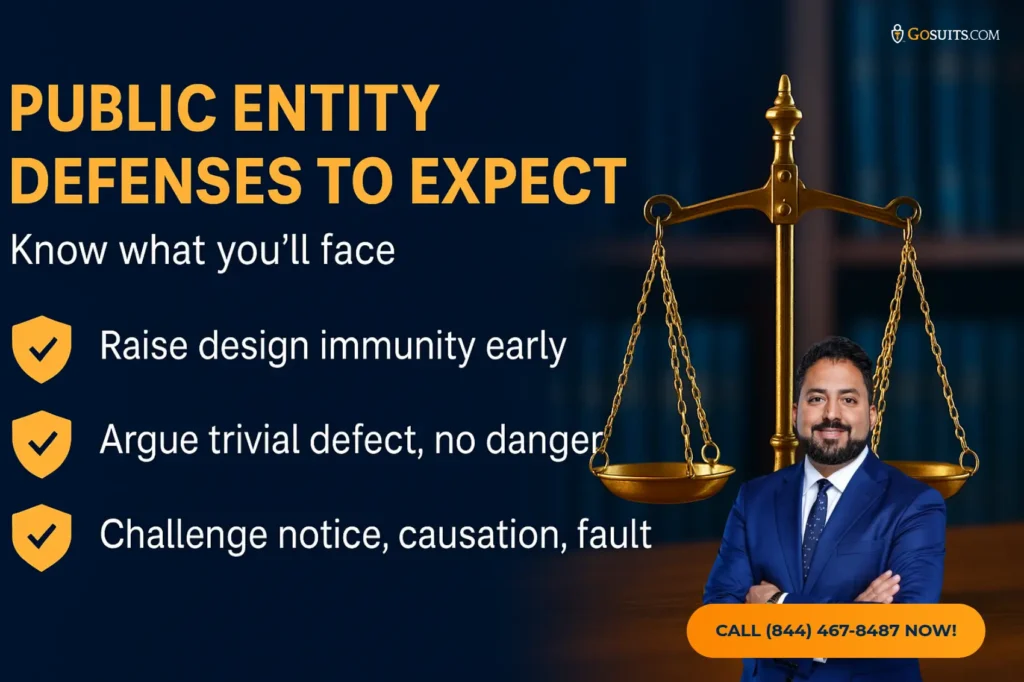
How can you strengthen a timely claim within six months?
- Identify the correct public entity: In the Los Angeles area, streets and sidewalks can be maintained by the City of Los Angeles, Los Angeles County, Caltrans, or a local city like Santa Monica or Inglewood. Confirm ownership and maintenance responsibilities now.
- Document the scene: Take clear photos and video of the condition, including measurements, lighting, and surrounding context. For sidewalks, capture the uplift height from multiple angles.
- Preserve evidence: Send preservation letters to the entity and any contractors asking that relevant video, maintenance logs, inspection records, and incident reports be retained.
- Get witness information: Record names and contact info of witnesses, bus drivers, or officers present.
- Detail your injuries and care: Keep medical records, bills, and notes on how the injuries affect daily life in Los Angeles County, from commuting in West LA to caregiving responsibilities in the San Fernando Valley.
- File within six months: Prepare and present a complete, verified claim under section 910 and serve it under section 915’s requirements.
- Track deadlines: Calendar the 45-day response period, six-month lawsuit deadline after any written rejection, or the two-year accrual deadline if no compliant written rejection arrives.
How can public entities and insurers in Los Angeles evaluate claims?
- Confirm jurisdiction and service: Verify that the claim was timely and properly presented to the correct office under section 915.
- Investigate promptly: Inspect the site, secure video and records, and interview involved personnel while details are fresh.
- Assess statutory liability: For section 835 claims, analyze whether a dangerous condition existed, whether it created a reasonably foreseeable risk, and whether the entity created the condition or had notice with time to fix.
- Evaluate immunities: Consider design immunity, discretionary act immunity, and the application of section 830.2 trivial defect doctrine based on the specific context.
- Consider early resolution: If liability appears clear and injuries are documented, consider early settlement, which the Act’s claim process is designed to facilitate.
Do wrongful death claims against Los Angeles public entities follow the six-month deadline?
Yes. Wrongful death claims against public entities in Los Angeles are subject to the six-month claim presentation deadline in Government Code section 911.2. Typically, accrual occurs on the date of death, and the decedent’s heirs or personal representative must present a timely claim. If more than six months have passed, a late-claim application under section 911.4 may be available if filed within one year of accrual and if statutory grounds exist. After a proper written rejection, the section 945.6 six-month lawsuit deadline applies. If the entity never sends a compliant written rejection, the two-year from accrual deadline applies instead.

How do dangerous sidewalk or street claims work in Los Angeles?
Claims alleging a dangerous condition of public property are governed by Government Code sections 830 to 835.2. A plaintiff must prove:
- Dangerous condition: The property was in a condition that created a substantial risk of injury when used with due care. See section 830(a).
- Causation: The condition proximately caused the injury.
- Foreseeability: The risk was reasonably foreseeable.
- Entity responsibility: The entity created the condition, or had actual or constructive notice under section 835.2, with enough time to protect against it.
Los Angeles sidewalk cases often involve uplift from tree roots or broken panels. Entities may assert the trivial defect doctrine under section 830.2, arguing the defect was minor when viewed in context. That evaluation looks at the size of the defect and surrounding factors such as lighting, obstructions, and location. Early measurements, photographs, and witness statements can be decisive.
How do public transportation accident claims work with LA Metro and other agencies?
LA Metro and other transit agencies in Los Angeles County are public entities. Personal injury claims involving buses, trains, or stations are subject to the six-month claim requirement of section 911.2. Steps to take:
- Identify the agency: Confirm whether the vehicle or station is operated by LA Metro, a municipal operator, or a contractor.
- Preserve evidence: Request preservation of on-board video, event data recorders, operator logs, and maintenance records.
- File the claim: Present a claim that complies with section 910 to the correct office or agent under section 915.
- Track the 45-day window: Note the entity’s response deadline and any written rejection, which can trigger the six-month lawsuit clock.
How are school district injury claims handled in Los Angeles County?
School districts, including LAUSD and neighboring districts in Pasadena, Glendale, Burbank, Beverly Hills, Inglewood, and Long Beach, are public entities. Personal injury or wrongful death claims must be presented within six months under section 911.2. The district’s governing board or designated agent receives claims under section 915. Claims should detail the incident, supervision context, and campus conditions, and they should identify staff involved if known. Some categories of claims may be subject to additional statutes and immunities, so careful legal analysis is important.
What are real-world timing examples for Los Angeles government claims?
- Example A: City sidewalk in Downtown Los Angeles
- Incident: January 10
- Claim deadline: July 10 under section 911.2
- Entity action: Written rejection mailed April 5 with statutory warning
- Lawsuit deadline: October 5 under section 945.6(a)(1)
- Example B: LA Metro bus collision in East LA
- Incident: March 1
- Claim deadline: September 1
- Entity action: No response within 45 days, deemed rejected
- Lawsuit deadline: If no compliant written rejection is ever mailed, two years from March 1 under section 945.6(a)(2)
- Example C: Late-claim application for a minor in Hollywood
- Incident: May 20
- No claim within six months; late-claim application filed the following January 15
- Timeliness: Within one year of accrual as required by section 911.4
- Outcome: The entity decides whether to grant or deny. If denied, a petition for relief under section 946.6 must be filed in superior court within six months of the denial notice
- Example D: County facility accident in West LA with no written rejection
- Incident: August 30
- Claim deadline: February 28 or 29, depending on leap year
- Entity action: Deemed rejected after 45 days; no written notice sent
- Lawsuit deadline: Two years from August 30 under section 945.6(a)(2)
Where do you get Los Angeles claim forms and how do you serve them near me?
- City of Los Angeles claim form: Visit the City’s official website and search for “City of Los Angeles Claim for Damages.” Confirm the current mailing or delivery address for the City Clerk or other designated recipient.
- Los Angeles County claim filing: Use Los Angeles County’s official site to find “Claim for Damages” and verify the correct department and address for service.
- LA Metro, school districts, and cities like Santa Monica and Pasadena: Each maintains an official page for claims. Do not rely on third-party listings.
- Service method: Deliver in person or by mail as allowed by Government Code section 915. Keep certified mail receipts and delivery confirmations.
If multiple entities could be responsible, present timely claims to each. For example, a curb ramp injury in Glendale at a state route intersection may involve both the city and Caltrans. Investigate maintenance responsibility before the six-month date arrives.
Why is legal help important for Los Angeles Government Claims Act cases?
Los Angeles government claim cases combine short deadlines, technical content requirements, strict delivery rules, and substantive defenses like design immunity. A small mistake with timing or service can prevent a case from being heard. If you suspect a public entity may be involved in your injury or a loved one’s death, prompt guidance can make the difference between a recoverable claim and a procedural dismissal. Do not wait to confirm who owns the property or operates the vehicle involved in the incident in Downtown Los Angeles, Hollywood, Beverly Hills, Pasadena, Glendale, Burbank, Inglewood, Long Beach, or elsewhere in Los Angeles County.
How can GoSuits Injury Lawyers help with Los Angeles Government Claims Act deadlines?
Government Claims Act cases are central to personal injury work in Los Angeles and Southern California. We focus on helping people hit the six-month presentation deadline, prepare compliant claims, and protect the subsequent lawsuit window. A free consultation can help you understand the timeline that applies to your facts, identify the correct public entities, and plan evidence preservation while you focus on recovery.
- Where we practice: We handle civil injury and wrongful death matters throughout Los Angeles, CA and Los Angeles County, including Downtown Los Angeles, West LA, Hollywood, the San Fernando Valley, East LA, South LA, Pasadena, Glendale, Burbank, Beverly Hills, Inglewood, and Long Beach.
- Technology-driven approach: GoSuits uses an exclusive proprietary software platform to accelerate intake, investigation, and claims tracking. This helps us act fast on six-month deadlines and 45-day response windows while keeping you informed.
- Attorney access, not case managers: Although we leverage technology to move your case faster, every client has a designated attorney and unfettered access to that attorney. We do not use case managers in place of lawyers.
- Leadership in innovation: We continually refine our litigation and discovery workflows to meet the procedural demands of municipal liability claims, from section 910 claim content to section 915 service and section 945.6 lawsuit timing.
- Past results: Our team has secured meaningful outcomes for injured clients across Southern California. You can review representative matters here: GoSuits Prior Cases. Results depend on the facts of each case.
- Practice areas and experience: We handle public entity claims, roadway and sidewalk cases, transit collisions, premises incidents, product-related injuries, and wrongful death. Our attorneys bring 30 years of combined experience to investigation, negotiation, and trial.
- Trial readiness: Public entities and insurers in Los Angeles evaluate whether a claim will be tried. Our trial experience informs strategy from day one, including the evidence needed to meet section 835 and to respond to common immunities.
- Next step: If your claim involves a Los Angeles public entity, speak with us promptly so we can assess the six-month presentation deadline, preserve evidence, and map out the claim and lawsuit timelines.
Where can you read the law and official guidance?
- California Government Code: Government Claims Act provisions, including sections 810–996.6, 901, 905, 910, 910.2, 910.8, 911, 911.2, 911.3, 911.4, 911.6, 912.4, 913, 915, 945.4, and 945.6, available through California Legislative Information: https://leginfo.legislature.ca.gov/
- California Courts Self-Help: Overview of claims against government and timing considerations on the Judicial Branch site: https://www.courts.ca.gov/
- Cornell Law School Legal Information Institute: Background on sovereign immunity and public entity liability concepts: https://www.law.cornell.edu/wex/sovereign_immunity
- United States Census Bureau QuickFacts: Los Angeles County population statistics for context: https://www.census.gov/quickfacts/losangelescountycalifornia
- Key California case on strict claim delivery: DiCampli-Mintz v. County of Santa Clara, 55 Cal. 4th 983 (2012) discussing strict compliance with Government Code section 915. Accessible via official reporters and public legal libraries.
Frequently Asked Questions
What is the Los Angeles government claim deadline near me?
For injury or wrongful death claims against a public entity in Los Angeles, present your claim within six months of accrual under Government Code section 911.2. Other claims may have a one-year deadline.
What happens if the City of Los Angeles never responds to my claim?
If the City does not act within 45 days, the claim is deemed rejected under section 912.4. The six-month lawsuit deadline in section 945.6 applies only if the City mails a written rejection that includes the statutory warning; otherwise, you have two years from accrual to sue.
Can I sue the government without filing a claim first?
No. Government Code section 945.4 requires a timely presented claim and rejection before filing suit for money damages.

Does the six-month deadline apply to police negligence claims in California?
Yes. Injury or death claims involving alleged police negligence in Los Angeles are subject to the six-month claim presentation rule.
How do I file a wrongful death claim against Los Angeles County?
Submit a verified claim within six months of the date of death to the County’s proper recipient under Government Code section 915. If rejected in writing, file suit within six months of the mailing date under section 945.6.
Where can I get the City of Los Angeles or LA County claim forms?
Use the official city or county website and search for “Claim for Damages.” Confirm the current mailing address and any entity-specific instructions before sending.
